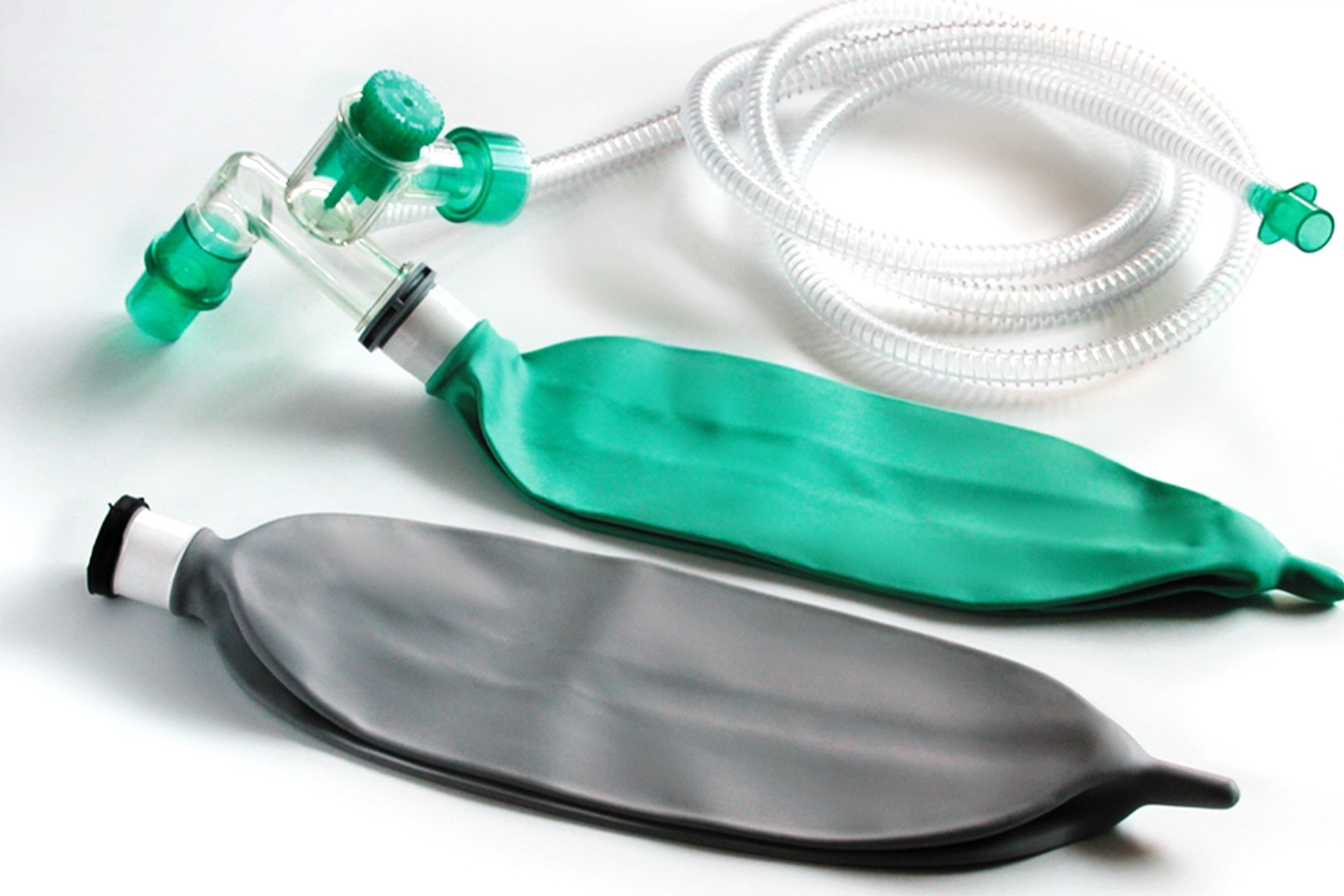
Difference between AMBU balloon and breathing ball emergency: advantages and disadvantages of two essential devices
Both the self-expanding balloon (AMBU) and the breathing ball emergency are devices used for respiratory support (artificial ventilation) and both consist mainly of a balloon, but there are some differences between them
The breathing ball emergency is not self-expanding (it does not inflate spontaneously), so it must be connected to an external oxygen source such as a cylinder.
In order to avoid barotrauma of the patient’s airway, there is a valve to control the pressure of the air insufflated into the lungs.
The self-expanding balloon (AMBU) is self-expanding, i.e. it fills itself with air after compression and may not be connected to a cylinder (thus it is ‘self-sufficient’ and more practical).
Since the AMBU does not always guarantee an optimal oxygen supply, it can be connected to a reservoir.
Compared to the AMBU, the breathing ball emergency has a shorter filling time and no air leaks
The breathing ball emergency allows larger volumes of air to be insufflated than the AMBU.
While the breathing ball emergency has a nozzle attached directly to the end of the endotracheal tube inserted into the patient, the AMBU balloon is attached to a face mask which is placed over the patient’s face to cover the mouth and nose.
When patients are intubated, breathing ball emergency ventilation should always be preferred to self-expanding balloon ventilation.
In case of acute respiratory failure with oxygen deficiency or carbon dioxide accumulation, the AMBU is preferred for better carbon dioxide evacuation.
Compared to the AMBU, the breathing ball emergency has no one-way valves, only a valve (Marangoni valve) to modulate the pressure of the gas mixture being insufflated into the lungs.
The breathing ball emergency is generally disposable, whereas the AMBU can be used several times
The AMBU has the advantage of requiring a minimally invasive manoeuvre that does not require any particular medical knowledge to use, so it is much more practical and simple than a B.B.E.; in addition, the AMBU has lower operating costs than the breathing ball emergency.
On the other hand, the AMBU does not always provide a sufficient amount of oxygen, partly because it is difficult for the mask to adhere well to the patient’s face.
On the other hand, the AMBU does not always provide a sufficient amount of oxygen, partly because it is difficult for the mask to adhere well to the patient’s face.
On-off has the advantage of providing the patient with a sufficient and adjustable amount of oxygen, but it has higher operating costs and its use is directly linked to intubation (a relatively invasive and complex manoeuvre, especially for those with little experience) and can therefore only be used by highly trained healthcare professionals.
Read Also:
Emergency Live Even More…Live: Download The New Free App Of Your Newspaper For IOS And Android
AMBU: The Impact Of Mechanical Ventilation On The Effectiveness Of CPR
Manual Ventilation, 5 Things To Keep In Mind
FDA Approves Recarbio To Treat Hospital-Acquired And Ventilator-Associated Bacterial Pneumonia
Pulmonary Ventilation In Ambulances: Increasing Patient Stay Times, Essential Excellence Responses
Microbial Contamination On Ambulance Surfaces: Published Data And Studies
Ambu Bag: Characteristics And How To Use The Self-Expanding Balloon


